Welcome to the captivating world of low poly art! In this article, we delve into the artistic style that has captured the hearts of many artists and gamers alike. Low poly art, characterized by its minimalistic and geometric aesthetics, has become a popular choice in the realm of digital art and game design.
In this introduction, we embark on a journey to uncover the essence of low poly art. We explore its origins, its unique features, and the advantages it offers in various creative fields. Whether you’re an aspiring artist, a game developer, or simply curious about this fascinating art form, this article will provide you with insights into the world of low poly and its significance in modern art and game design.
What Is Low Poly Art?
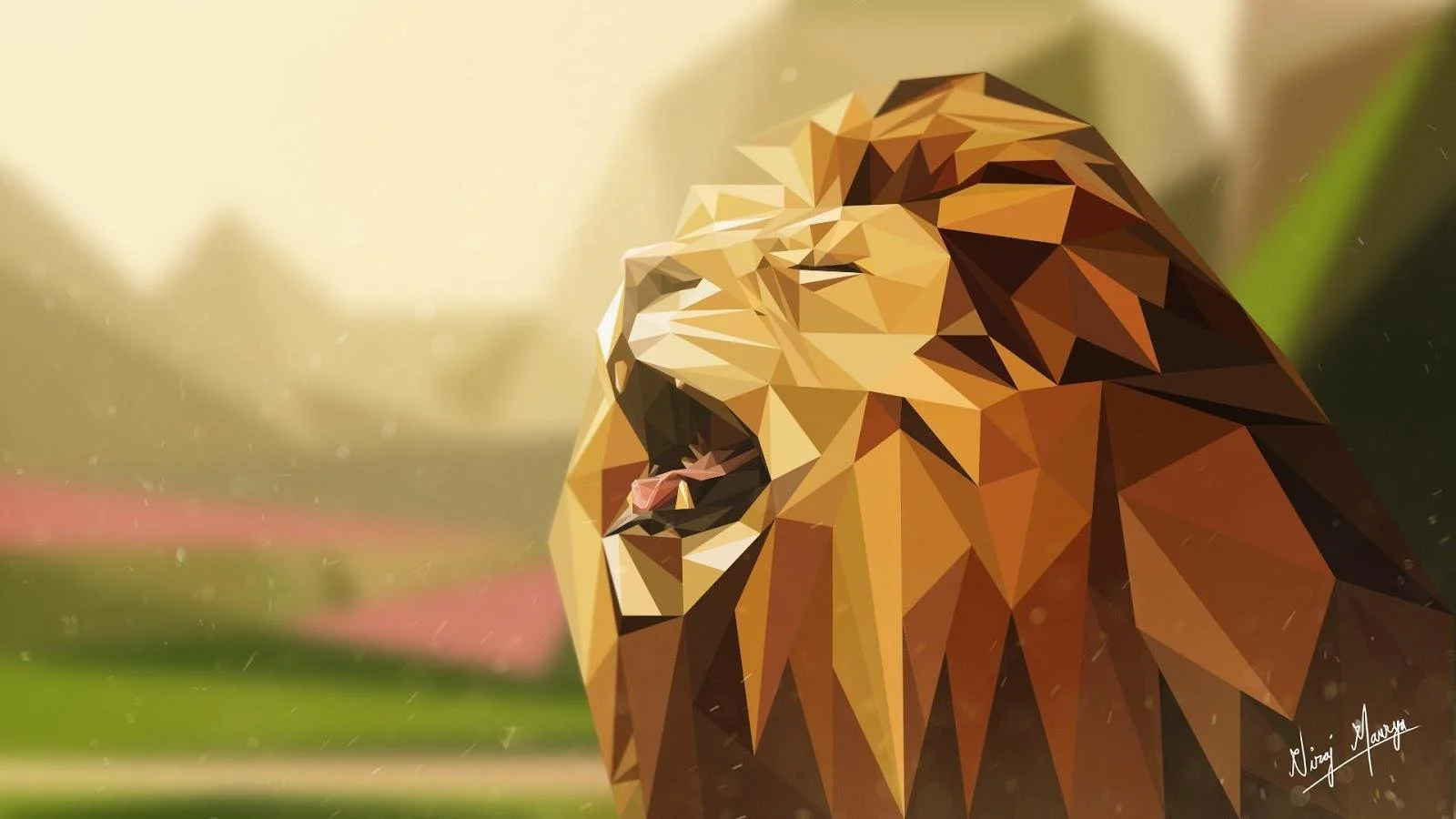

Low poly art, short for low polygon art, is a distinctive artistic style emphasizing minimalism and simplicity. It is characterized by its use of geometric shapes and a limited number of polygons to create visually striking and stylized imagery. In low poly art, objects and characters are represented using fewer polygons, resulting in a blocky and angular appearance.
The term “low poly” originates from the world of 3D computer graphics, where models were initially limited by technical constraints regarding polygon count. However, low poly art has evolved beyond its technical limitations and has become a deliberate artistic choice. Artists intentionally adopt this style to create a unique visual language that evokes nostalgia, simplicity, and aesthetic charm.
One of the defining aspects of low poly art is its ability to convey complex forms and environments using a minimalist approach. By reducing the number of polygons, artists focus on the essential elements of their creations, stripping away unnecessary details while maintaining recognizability and artistic expression. This results in a stylized and abstract representation that encourages viewers to engage their imagination and fill in the gaps.
Low poly art has a distinct visual impact, whether used in illustrations, animations, or video games. It captures attention through its bold shapes, vibrant colors, and a sense of artistic interpretation. It has found a special place in the world of game design, where it is often used to create visually appealing environments, characters, and objects, fostering a unique and immersive gaming experience.
What are the Advantages of Low Poly?
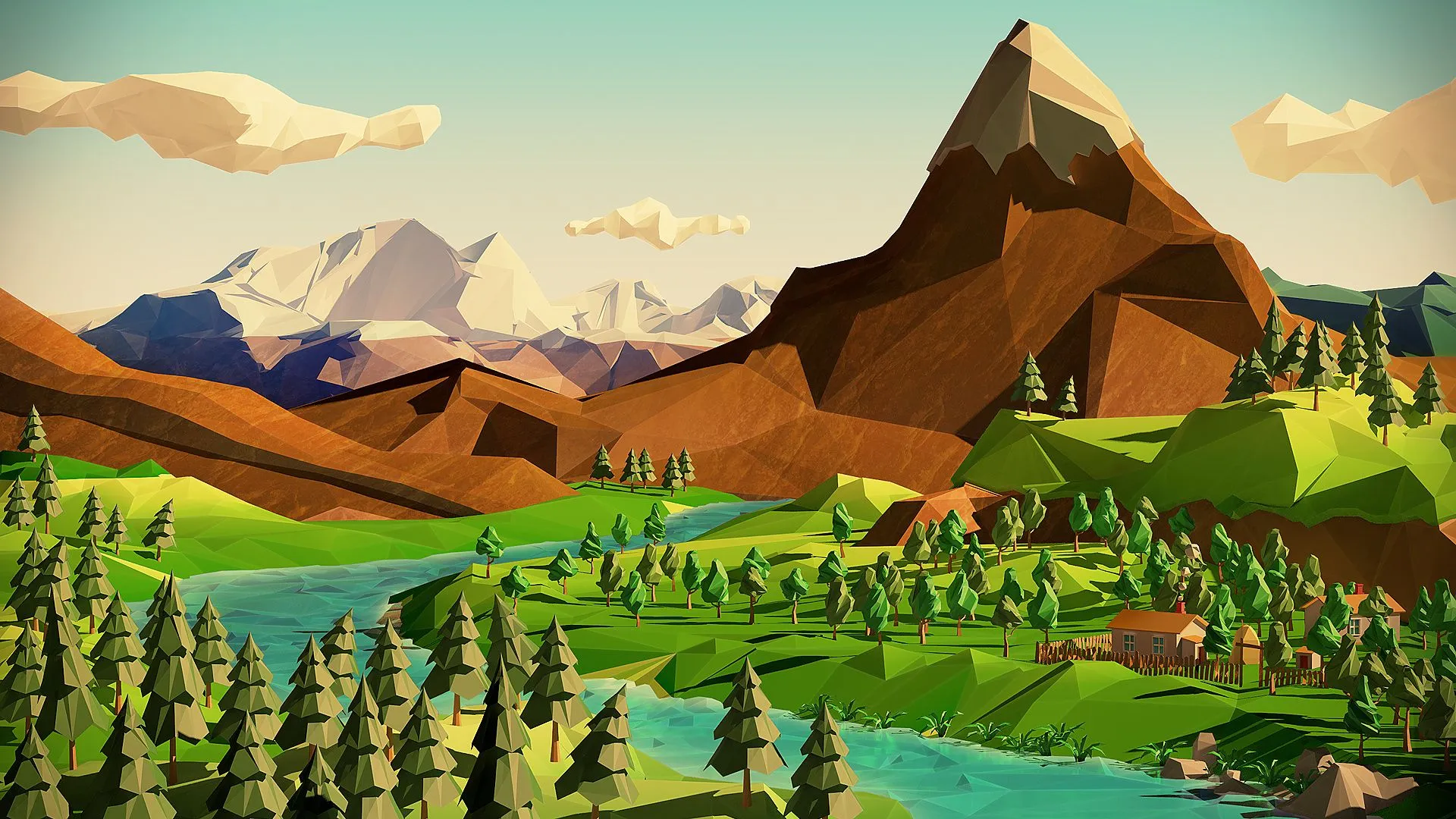

Low poly art offers several advantages that make it a popular choice among artists and game developers:
- Performance Optimization: Low poly art requires fewer polygons than high-resolution 3D modeling design, resulting in lighter and more optimized assets. This optimization allows for better performance in real-time rendering, making it ideal for games, virtual reality experiences, and other interactive applications. Low poly models are less resource-intensive and can be rendered smoothly even on devices with limited processing power.
- Quicker Production Time: Creating low poly art typically involves fewer polygons and simplified shapes, which allows artists to work more efficiently. The reduced complexity of the models makes it faster to create, texture, and animate them. This can be particularly beneficial for projects with tight deadlines or limited resources, as it speeds up the production pipeline.
- Artistic Style and Aesthetics: The minimalist and stylized nature of low poly art lends itself to unique and visually striking aesthetics. The bold geometric shapes and vibrant colors create a distinctive look that stands out from more realistic or high-detail styles. Low poly art often evokes a sense of nostalgia, simplicity, and charm, appealing to both creators and viewers.
- Flexibility and Creativity: Low poly art allows for artistic interpretation and abstraction. Artists have the freedom to simplify and stylize objects and environments, giving them a distinct visual identity. The simplicity of low poly art leaves room for the viewer’s imagination, inviting them to engage with the artwork and fill in the details. This flexibility encourages creativity and allows for a wide range of artistic expressions.
- Compatibility and Accessibility: Low poly models are generally smaller in file size compared to high-resolution counterparts, making them easier to distribute and share. They can be quickly downloaded or loaded in real-time applications without significant storage or bandwidth requirements. The reduced complexity of low poly models makes them more accessible to a wider range of devices, including mobile platforms and older hardware.
Overall, the advantages of low poly art lie in its performance optimization, quicker production time, unique aesthetics, creative freedom, and compatibility. These qualities have contributed to its popularity and widespread use in various industries, especially in game development stages, where it has become an iconic and well-loved style.
Features of the Low-Poly Art
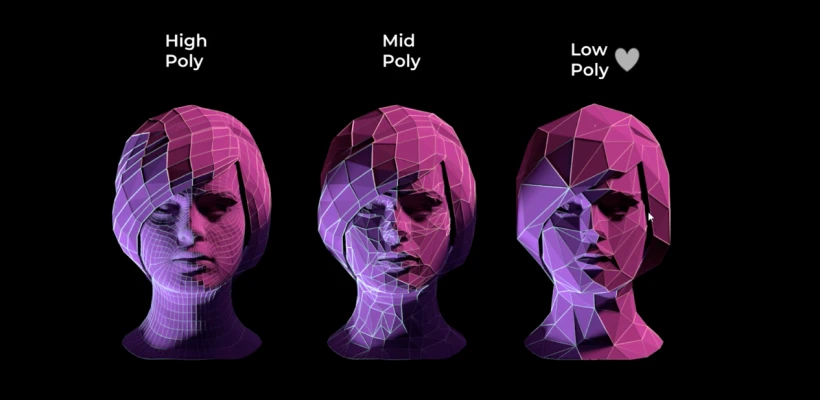

Low-poly art, characterized by its simplified and geometric style, possesses several distinctive features that contribute to its visual appeal and creative possibilities:
- Geometric Shapes: Low-poly art prominently features geometric shapes such as triangles, squares, and polygons. These shapes are used to represent objects, characters, and environments in a simplified and stylized manner. The clean lines and sharp edges create a visually striking aesthetic.
- Reduced Polygon Count: One of the defining features of low-poly art is the intentional use of a limited number of polygons to create objects and scenes. By minimizing the polygon count, artists achieve a minimalist look while maintaining recognizable forms. This approach allows for optimization and efficient rendering, making it suitable for real-time applications.
- Bold Colors: Low-poly art often employs vibrant and contrasting colors to enhance the visual impact of the artwork. Artists use color schemes strategically to highlight different elements, create depth, and evoke specific moods or atmospheres. The use of bold colors contributes to the overall stylized and eye-catching nature of low-poly art.
- Flat Shading: Instead of realistic lighting and shading techniques, low-poly art typically employs flat shading or simple gradients. This style further emphasizes the geometric shapes and enhances the minimalistic appearance. Flat shading helps maintain a consistent and clean aesthetic throughout the artwork.
- Minimal Detail: Low-poly art intentionally simplifies details to their essential elements. Fine details and intricate textures are often omitted or reduced to maintain the artwork’s overall simplicity and stylized nature. The focus is on conveying the essence of the subject matter while leaving room for the viewer’s imagination.
- Nostalgic and Retro Vibes: Low-poly art often evokes a sense of nostalgia, reminiscent of early 3D games and graphics from the 1990s and early 2000s. This aesthetic appeals to those who grew up playing retro games and creates a nostalgic connection to the past. It adds a unique charm and character to the artwork.
- Versatility: Low-poly art is a versatile style that can be applied to various genres and themes. It can be found in games, animations, illustrations, virtual reality experiences, and even architectural visualizations. The simplicity and distinctiveness of low-poly art make it suitable for a wide range of creative projects.
The features of low-poly art, including its geometric shapes, reduced polygon count, bold colors, flat shading, minimal detail, nostalgic vibes, and versatility, contribute to its appeal and make it a popular choice for artists and game developers seeking a visually impactful and stylized aesthetic.
What is the difference between low-poly and high-poly games?
The difference between low-poly and high-poly games lies in the level of detail and complexity of the 3D models used in the game.
- Low-Poly Games:
- Low-poly games feature 3D models with a relatively small number of polygons (or vertices), resulting in simpler and less detailed character models, environments, and objects.
- Low-poly models are characterized by angular shapes, flat surfaces, and minimalistic detailing, often resembling geometric shapes rather than realistic forms.
- Low-poly games are commonly associated with retro and stylized art styles, as well as genres such as indie games, mobile games, and virtual reality experiences.
- Examples of low-poly games include “Minecraft,” “Undertale,” and “Monument Valley.”
- High-Poly Games:
- High-poly games feature 3D models with a significantly higher number of polygons, allowing for greater detail, realism, and visual fidelity.
- High-poly models are characterized by smooth curves, intricate textures, and lifelike details, resulting in more realistic and immersive game worlds.
- High-poly games are often associated with AAA titles, cinematic experiences, and cutting-edge graphics technology, such as those found in action-adventure games, first-person shooters, and open-world games.
- Examples of high-poly games include “The Last of Us Part II,” “Red Dead Redemption 2,” and “Cyberpunk 2077.”
In summary, the primary difference between low-poly and high-poly games lies in the level of detail and complexity of the 3D models, with low-poly games prioritizing simplicity and stylization, while high-poly games focus on realism and immersion.
What is low poly modeling?
Low poly modeling is a technique used in 3D computer graphics to create 3D models with a relatively small number of polygons (or vertices). This approach aims to optimize performance and efficiency by reducing the computational overhead associated with rendering complex 3D scenes.
Key characteristics of low poly modeling include:
- Simplicity: Low poly models typically feature simplified shapes, flat surfaces, and minimalistic detailing to achieve a stylized or abstract aesthetic.
- Efficiency: By using fewer polygons, low poly models require less memory and processing power to render, making them suitable for real-time applications such as video games, simulations, and interactive media.
- Artistic Expression: Despite their simplicity, low poly models offer ample opportunities for artistic expression and creativity, allowing artists to convey complex ideas and emotions through minimalist forms and geometric shapes.
- Optimization: Low poly modeling involves optimizing the placement and distribution of polygons to maximize visual impact while minimizing computational resources. Techniques such as edge flow optimization, polygon reduction, and texture mapping are commonly used to achieve efficient and visually appealing results.
- Versatility: Low poly modeling can be applied to a wide range of artistic styles and genres, from retro-inspired pixel art to modern minimalist design, making it a versatile technique for creating visually striking 3D graphics.
Overall, low poly modeling offers a balance between aesthetics and performance, allowing artists and developers to create immersive and engaging 3D experiences while optimizing resource usage and maximizing visual impact.
Top 7 Famous Low-Poly Games
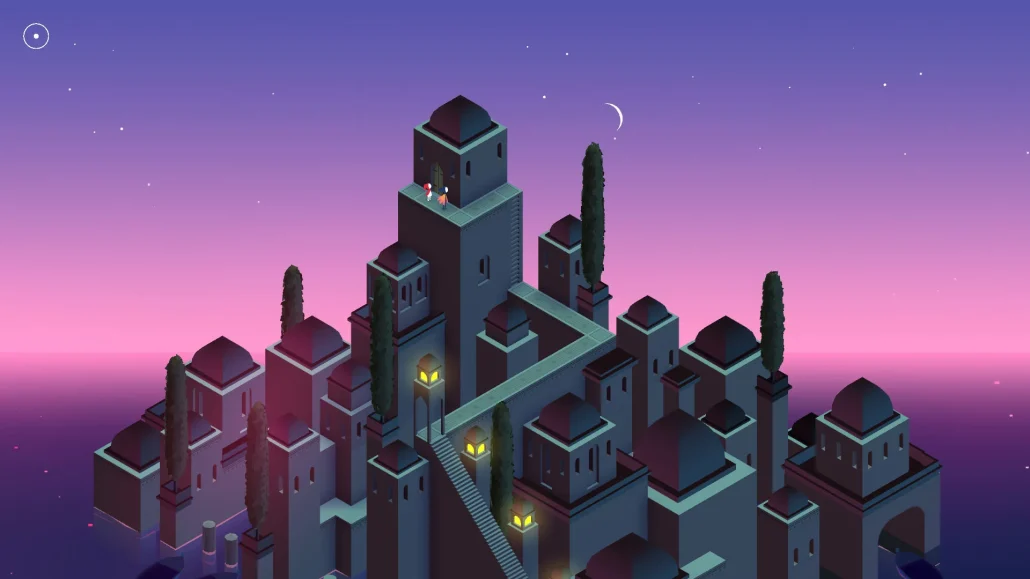

Low-poly games have gained popularity for their unique visual style and nostalgic appeal. Here are seven famous low-poly games that have made a significant impact in the gaming industry:
- Minecraft: Developed by Mojang Studios, Minecraft is an iconic sandbox game that utilizes low-poly aesthetics to create a blocky and pixelated world. Players can explore, build, and interact with the environment, fostering creativity and endless possibilities.
- Monument Valley: This puzzle game developed by two Games combines low-poly graphics with optical illusions and architectural designs. The game’s captivating visuals and innovative gameplay mechanics have garnered critical acclaim and a dedicated fan base.
- Journey: Developed by that game company, Journey is a visually stunning and emotionally evocative game that features a vast desert landscape rendered in low-poly art. Players embark on a mysterious and introspective journey, exploring the beautifully crafted environments while uncovering the game’s narrative.
- Untitled Goose Game: Created by House House, Untitled Goose Game is a delightful and comedic stealth game where players control a mischievous goose causing chaos in a charming low-poly village. Its whimsical art style and humorous gameplay have made it a hit among players of all ages.
- Firewatch: Developed by Campo Santo, Firewatch is a first-person mystery game set in the visually captivating landscapes of Wyoming’s wilderness. The game’s low-poly art, compelling narrative, and immersive atmosphere create an unforgettable gaming experience.
- Astroneer: This space exploration game developed by System Era Softworks features a low-poly art style in a colorful and procedurally generated universe. Players embark on an interplanetary adventure, gathering resources, building bases, and uncovering the mysteries of the cosmos.
- Hyper Light Drifter: Developed by Heart Machine, Hyper Light Drifter is a role-playing action game that pays homage to classic 16-bit era visuals while incorporating low-poly art. Its vibrant and atmospheric world, challenging gameplay, and intriguing story have captivated players worldwide.
These top seven low-poly games represent the diverse range of experiences that can be achieved through this distinctive art style. Each game showcases low-poly graphics’ creative potential and aesthetic appeal, proving that captivating visuals can be achieved even with simplified forms and minimalistic designs.
Low-Poly Art Modeling Techniques
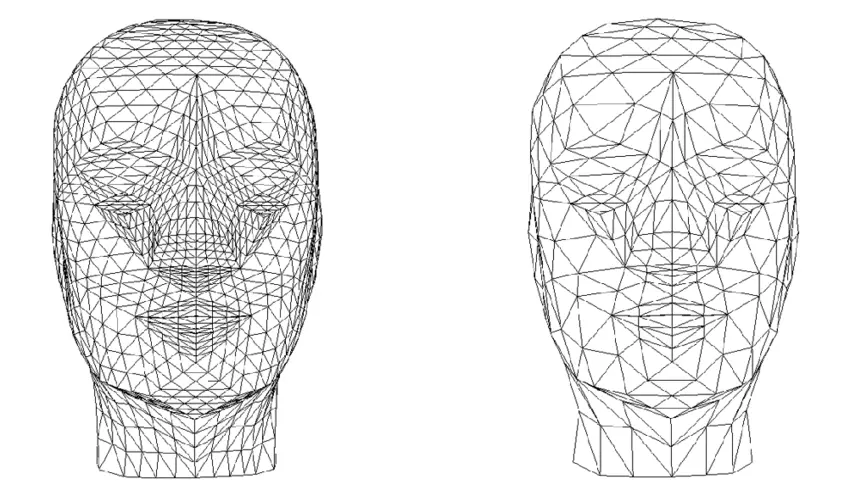

Low-poly art modeling involves creating 3D models with limited polygons, resulting in a distinct angular and simplified aesthetic. Here are some common techniques used in low-poly art modeling:
- Polygon Reduction: Artists reduce the number of polygons in their models by simplifying complex shapes into fewer and larger polygons. This process helps maintain the overall form and silhouette of the object while reducing unnecessary detail.
- Edge Loops: Edge loops are strategically placed loops of polygons that define the shape and structure of the model. By carefully manipulating the placement and flow of these loops, artists can create smooth and controlled curves and contours in their low-poly models.
- Simplified Textures: Low-poly models often utilize simplified textures with flat colors or limited gradients. This approach helps enhance the minimalistic style and reduces the need for intricate texture details, which can be time-consuming to create.
- Strategic Detailing: Instead of relying on high-resolution textures or complex geometry, low-poly art uses strategic detailing to convey information. Artists use well-placed edges, vertices, and simple shapes to imply details such as edges, creases, or patterns, creating the illusion of complexity with minimal geometry.
- Efficient UV Mapping: UV mapping applies 2D textures onto a 3D model’s surface. In low-poly art, artists aim for efficient UV mapping by minimizing texture distortion and optimizing the use of texture space. This helps maintain visual clarity and reduces the overall file size of the model.
- Emphasis on Silhouette: In low-poly art, the model’s silhouette is crucial in defining its recognizable shape. Artists focus on ensuring the silhouette remains clear and distinct, using strong angles and bold shapes to create visually striking forms.
- Minimalistic Animation: Low-poly models often feature simplified animations that match the art style. By employing limited and exaggerated movements, artists can convey character and personality without requiring intricate and detailed animations.
These modeling techniques enable artists to create visually appealing and expressive low-poly models while embracing the unique aesthetic of the style. While emphasizing simplicity, thoughtful execution of these techniques can result in captivating and memorable artwork.
Best Tools for Low Poly Art
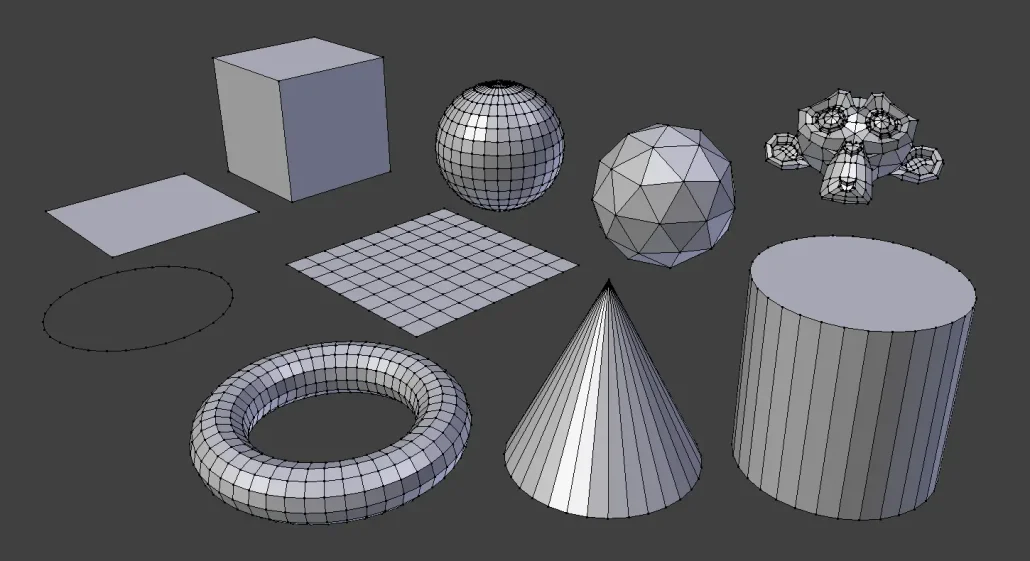

When it comes to creating low-poly art, several software tools can help artists bring their vision to life. Here are some of the best tools commonly used for low-poly art:
- Blender: Blender is a powerful and versatile 3D modeling software widely used in the game development and animation industries. It offers robust modeling tools, UV mapping capabilities, and comprehensive features for creating low-poly art.
- Maya: Maya is another popular 3D modeling and animation software used by professionals in the gaming and film industries. It provides a wide range of tools and features for creating detailed low-poly models and offers advanced capabilities for rigging and animation.
- 3ds Max: 3dsMax is a professional 3D modeling and rendering software known for its extensive toolset. It offers a variety of modeling features and can be used effectively for creating low-poly art, especially for architectural visualization and game development.
- MagicaVoxel: MagicaVoxel is a free voxel-based modeling software allowing artists to create low-poly art. It offers an intuitive interface, easy-to-use tools, and real-time rendering, making it an excellent choice for creating pixelated and blocky low-poly models.
- Unity: While primarily known as a game engine, Unity also offers powerful modeling capabilities. It has a user-friendly interface and a range of tools that can be utilized for low-poly art creation. Artists can create and manipulate 3D models directly within the Unity editor.
- Procreate: Procreate is a popular digital art app for iPad that provides a wide range of tools and features for creating digital illustrations, including low-poly art. It offers a seamless and intuitive drawing experience, making it a convenient choice for artists who prefer working on a tablet.
- Adobe Illustrator: Although primarily a vector graphics software, Adobe Illustrator can be used effectively for creating low-poly art. Its vector-based approach allows artists to create precise shapes and clean lines, which are essential in low-poly art.
These tools provide artists with the necessary features and flexibility to create stunning low-poly art. The choice of software depends on the artist’s preferences, skill level, and specific project requirements.
The History of Low Poly Art
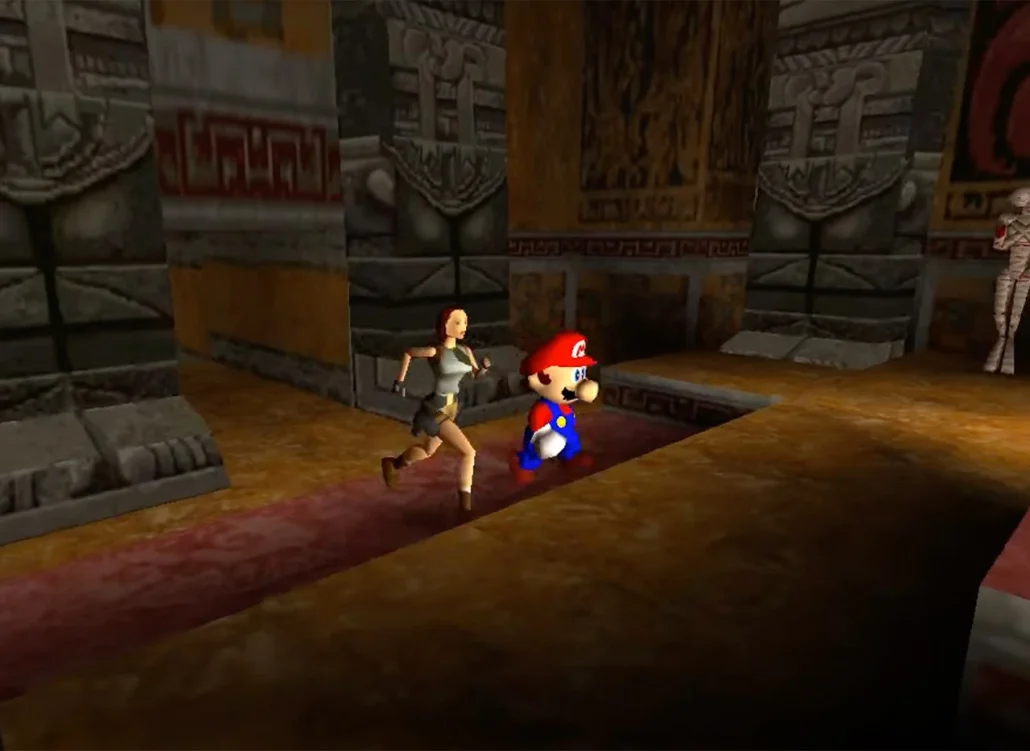

The history of low poly art can be traced back to the early days of computer graphics and 3D modeling. In the early 1990s, when computer hardware and software were still relatively limited in processing power and memory, game developers and artists had to find creative ways to optimize their resources while still creating visually appealing environments and characters.
During this time, low poly art emerged as a solution. It involved creating 3D models with fewer polygons, which helped conserve resources and improve performance. Low poly models typically featured angular and simplified shapes with fewer details than their high poly counterparts.
One of the earliest examples of low poly art can be seen in video games such as “Tomb Raider” and “Super Mario 64.” These games utilized low poly models to render their environments and characters, allowing them to run smoothly on the limited hardware of the time.
As technology advanced and hardware capabilities improved, the focus shifted toward creating more realistic and detailed 3D graphics. High poly models became more common, offering intricate details and smoother surfaces. However, even with the advent of more powerful hardware, low poly art continued to have its appeal.
The history of low poly art showcases its evolution from a practical solution for optimizing resources to a distinctive and beloved art style. Its enduring popularity is a testament to its unique visual appeal and ability to evoke nostalgia while offering a visually striking experience.
Low Poly art in Modern Game Design
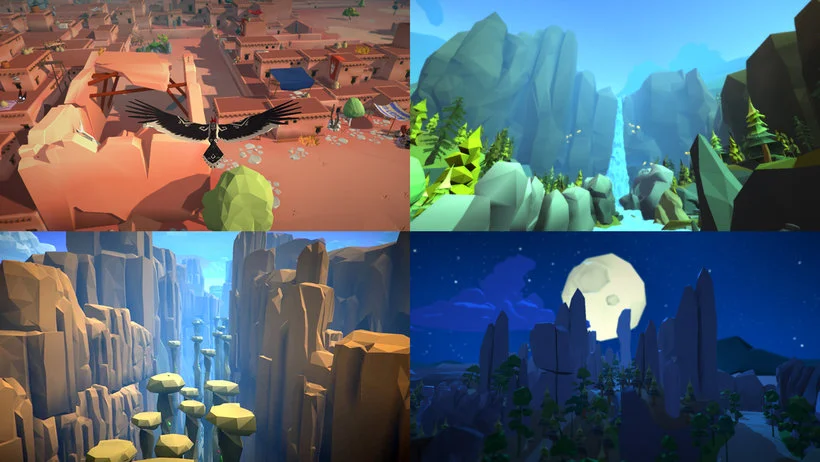

In recent years, interest in low poly art has been resurgent, driven by its unique aesthetic and nostalgic appeal. Many indie game developers, artists, and enthusiasts have embraced low poly as a deliberate artistic style, appreciating its simplicity and charm. Low poly art is widely used in various applications, including video games, virtual reality experiences, animations, and architectural visualizations.
One of the key reasons for the continued use of low poly art in modern game design elements is its ability to convey a sense of nostalgia and simplicity. The angular shapes, little details, and vibrant colors often associated with low poly art evoke a retro gaming aesthetic that resonates with players, particularly those who grew up with classic video games. This nostalgic appeal can create a unique and engaging experience that sets a game apart from more realistic-looking titles.
Additionally, low poly art offers practical advantages for game developers. The reduced complexity of low poly models allows for easier and faster creation, as fewer polygons need to be modeled and textured. This can especially benefit small indie game studios or solo developers working with limited resources. The lightweight nature of low poly assets also contributes to optimized performance, making it ideal for mobile games or platforms with hardware limitations.
Low poly art’s simplicity and versatility make it suitable for various game genres and art styles. It can create charming and whimsical worlds and stylized and abstract environments. Furthermore, low poly art’s clean and distinct shapes can enhance readability and make gameplay elements more visually understandable, which is crucial for games with fast-paced action or strategic gameplay.
Low poly art has also found its way into virtual reality (VR) experiences in recent years. The simplified geometry and vibrant colors lend themselves well to the immersive nature of VR, creating visually compelling worlds that can be explored in three dimensions.
Low poly art thrives in modern game design due to its unique visual appeal, nostalgic charm, practical benefits, and versatility. Its enduring popularity showcases its ability to captivate players and create memorable gaming experiences that stand out in an industry often dominated by high-fidelity graphics.
Low Poly Art Today
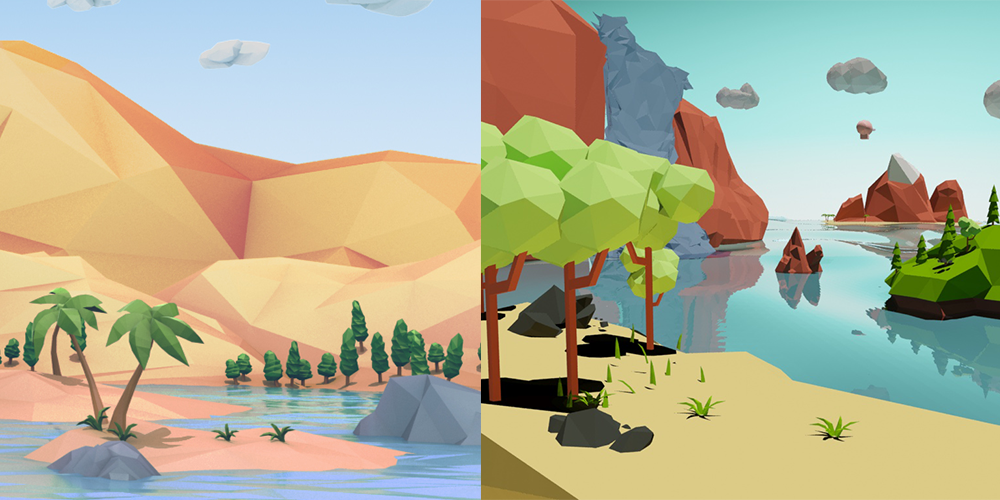

Low poly art has evolved and expanded in today’s game industry, solidifying its position as a prominent art style embraced by both indie developers and larger game studios. While it initially gained popularity for its retro-inspired aesthetic and technical advantages, low poly art has continued to innovate and adapt to the ever-changing game design landscape.
One notable trend in low poly art today is the exploration of hybrid styles and combinations with other art techniques. Game developers are blending low poly art with elements of cel-shading, hand-drawn textures, or even incorporating realistic lighting effects to create unique visual experiences. This experimentation and fusion of styles result in captivating worlds that push the boundaries of traditional low poly art.
Furthermore, low poly art has expanded beyond the realm of games and has found its way into various forms of media and entertainment. It is increasingly utilized in animations, short films, virtual reality experiences, and advertising campaigns. Low poly art’s distinctive and eye-catching nature makes it versatile for storytelling and visual communication across different platforms.
Regarding accessibility, the availability of tools and resources for creating low poly art has significantly increased. Artists and designers can now choose from various software applications tailored for low poly modeling, texturing, and rendering. These tools streamline the workflow, allowing artists to bring their creative visions to life more efficiently and precisely.
Moreover, the low poly art community has grown substantially, fostering collaboration, sharing of knowledge, and inspiration among artists. Online platforms, forums, and social media groups dedicated to low poly art provide a space for artists to showcase their work, exchange techniques, and offer support. This vibrant community encourages the growth and exploration of low poly art, pushing the boundaries of what can be achieved with this unique style.
Low poly art continues to thrive and evolve in the modern game industry and beyond. Its hybridization with other art styles, expansion into various forms of media, increased accessibility of tools, and the supportive community surrounding it have all contributed to its relevance and enduring appeal. As technology advances and creative minds continue to push artistic boundaries, we can expect low poly art to remain an influential and exciting aspect of visual design in the years to come.
What are the Rules for Low Poly Art?
Low poly art is characterized by its minimalist approach, featuring a limited number of polygons to create simple, yet visually appealing, game assets. To excel in creating low poly art, several key rules should be considered. First, prioritize shapes: use basic geometric forms like cubes, spheres, and cylinders to build your models. Keep your model’s topology clean and optimized to maintain a low polygon count. Utilize edge loops effectively to define the contours of your object.
Another rule is to focus on color and texture. Due to the simplified geometry, colors and textures play a crucial role in adding depth and detail to low poly models. Limited color palettes can create a cohesive and striking visual style. Use textures to define different surfaces and give them a more tactile feel.
Low Poly Art in Different Game Genres
Low poly art isn’t confined to a single game genre – it’s a versatile style that can enhance various types of games. In puzzle games, the clean lines and uncluttered aesthetics of low poly art can aid players in focusing on solving puzzles. Adventure games can benefit from the whimsical and imaginative atmosphere that low poly art can create. Even action and shooter games can use low poly art to their advantage by maintaining smooth performance while delivering a distinctive visual style.
The approach can be adjusted to match the mood of the game. For example, a low poly art style with bright colors and soft shapes can lend itself well to family-friendly or casual games. On the other hand, a more muted color palette and angular shapes might suit a game with a darker narrative.
How To Create Low Poly Art
Creating low poly art is an artistic process that embraces simplicity and geometric shapes. Here are the steps to embark on your low poly art journey:
Find a Good Reference Photo
Begin by selecting a reference photo that you’d like to recreate in the low poly style. The image can be of anything – a landscape, an animal, an object, or even a portrait. It’s crucial to have a clear reference to guide your work.
Decide on the Shape
Low poly art involves breaking down objects or scenes into simple, angular shapes. Determine the primary shapes that will represent the elements in your artwork. Triangles, squares, and hexagons are commonly used to create this geometric aesthetic.
Look for Symmetry
Low poly art often employs symmetry to maintain a balanced and harmonious composition. Ensure that the shapes you use are symmetrical, particularly if you’re working on a subject with repetitive or mirrored elements.
Choose the Dimension
Decide whether you want your low poly art to be 2D or 3D. In 2D, you’ll be working with flat, polygonal shapes, while in 3D, you’ll be creating three-dimensional objects with facets. Both styles have their unique appeal and can be used for different artistic expressions.
Let Yourself Be Inspired by Others
Study low poly art created by other artists. Gain inspiration from their techniques, color palettes, and styles. While it’s essential to be inspired by others, aim to add your creative flair to make your low poly art unique and personal.
Why Is Low Poly a Trend?
Low poly art has emerged as a prominent trend in the world of digital art and design for several compelling reasons:
- Aesthetic Appeal: Low poly art offers a unique, visually striking aesthetic that is both simple and eye-catching. Its combination of basic geometric shapes and vibrant colors appeals to contemporary design sensibilities.
- Nostalgia: Low poly art often evokes a sense of nostalgia, reminiscent of early 3D graphics and video game visuals from the 1990s. This nostalgia resonates with a broad audience, particularly those who grew up with classic video games.
- Technical Accessibility: Creating low poly art is relatively accessible from a technical perspective. Artists can use a variety of software tools, many of which are user-friendly and readily available, to produce their low poly creations.
- Versatility: Low poly art can be applied to diverse subjects and styles, from landscapes and architecture to character design and abstract art. Its versatility makes it suitable for a wide range of projects and industries, including gaming, animation, and graphic design.
- Optimization: In the gaming industry, low poly art serves a practical purpose. It is an efficient way to create game assets with lower polygon counts, ensuring optimal performance and smoother gameplay, even on less powerful hardware.
The Future of Low Poly Art in Game Development
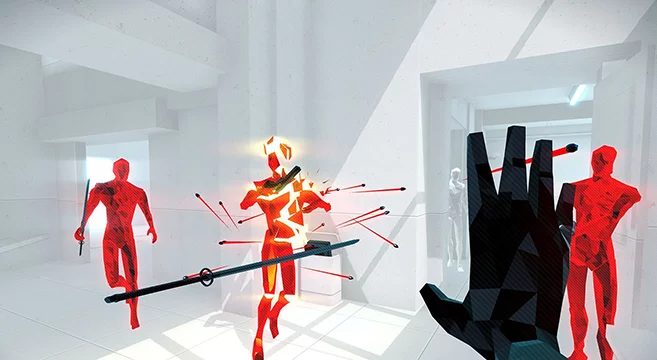

Low poly art continues to have a bright future in game development. As technology advances, game engines become more powerful, enabling developers to create richer visual experiences while still maintaining the charm of low poly aesthetics. This style’s popularity has proven that complex visuals aren’t always necessary for creating engaging and immersive worlds.
The nostalgic appeal of low poly art also contributes to its longevity. Many players are drawn to its retro, pixelated look that harkens back to earlier eras of gaming. Additionally, low poly art aligns with the growing indie game movement, where smaller development teams often lean into unique visual styles to stand out in a crowded market.
In conclusion, low poly art showcases how simplicity can yield captivating results in game development. By adhering to its rules and adapting it to different genres, developers can create games that are not only visually distinct but also memorable and enjoyable for players. As technology evolves, low poly art will continue to evolve alongside it, shaping the future of game design.
Why is low poly a trend?
Low poly art has gained popularity due to its distinct visual appeal characterized by minimalist and geometric designs. It evokes nostalgia for early 3D video games, attracting both new and experienced gamers. Beyond aesthetics, low poly art offers practical advantages, such as improved performance, making it suitable for mobile and older hardware. Its accessibility empowers a wider range of artists, as it doesn’t demand extensive technical expertise. This style fosters creative freedom, allowing artists to express complex ideas through simplicity and experiment with imaginative designs across different media.


What is Low Poly Game Art?
Low poly game art is a manifestation of the low poly style within the context of video game development. It encompasses the creation of characters, environments, objects, and assets with a deliberately reduced polygon count. The objective of low poly game art is to strike a balance between aesthetics and performance. By using fewer polygons, game designers and artists can ensure that their games run smoothly on a wide range of devices and platforms while offering players a visually engaging experience.
Low poly game art typically features distinct characteristics, including simple geometric shapes, flat or faceted surfaces, and sharp angles. To enhance its visual appeal, artists often employ vibrant colors and stylized textures. This unique approach to game art has proven to be particularly effective in capturing players’ attention and providing a memorable visual experience.
When Should Low Poly Game Art Be Used?
Low poly game art should be considered and used in specific scenarios within game development:
- Performance-Conscious Projects: Low poly art is an excellent choice for games designed to run on a wide range of hardware, including mobile devices, older PCs, or gaming consoles. Its efficiency in resource utilization ensures smooth gameplay even on less powerful platforms.
- Stylized or Nostalgic Games: Games aiming for a unique, stylized look or those seeking to evoke nostalgia for early 3D gaming can benefit from low poly art. Its distinct visual aesthetic resonates with players and can make a game stand out.
- Indie Game Development: Low poly game art is often embraced by indie game developers with limited resources. It allows small teams or individual developers to create visually appealing games without the need for extensive 3D modeling expertise or high-end hardware.
- Virtual Reality (VR) and Augmented Reality (AR) Experiences: Low poly art can be advantageous in VR and AR applications, as it demands less computational power, reducing the risk of motion sickness and ensuring smoother performance.
- Artistic Expression: Games that prioritize artistic expression and creativity over hyper-realism can benefit from low poly game art. It provides a canvas for artists and designers to experiment with minimalism, resulting in unique and imaginative visual experiences.
Low-poly art
The Role of Simplicity and Minimalism in Creating Striking Visuals
Low poly art embraces simplicity and minimalism as core principles in its visual design. By using a reduced number of polygons and simplistic geometric shapes, low poly art achieves a clean and uncluttered aesthetic that is visually striking. This minimalist approach allows artists to convey complex ideas and environments with a sense of clarity and elegance, relying on the essential elements of form, color, and composition to captivate viewers. The deliberate use of simple shapes and lines encourages imagination and interpretation, inviting viewers to engage with the artwork on a deeper level and appreciate its beauty in its most essential form.
How Color Palettes Contribute to the Overall Aesthetic
Color palettes play a crucial role in shaping the aesthetic of low poly art. While low poly art typically features fewer polygons and details compared to traditional digital art styles, color choice becomes even more important in conveying mood, atmosphere, and visual appeal. Low poly artists often opt for vibrant and harmonious color schemes that complement the geometric nature of the artwork, using contrasting hues to create depth and emphasis. The strategic use of color can evoke specific emotions and associations, whether it’s the warm tones of a sunset casting long shadows across a landscape or the cool blues and greens of a tranquil underwater scene. By carefully selecting and blending colors, artists can enhance the impact and immersiveness of low poly art, transforming simple shapes into captivating visual experiences.
Evolution of Low Poly Art in the Digital Age
Low poly art has experienced a remarkable evolution in the digital age, transitioning from its origins as a practical solution for optimizing graphics in early video games to a popular art style embraced by artists across various creative fields. In the early days of 3D gaming, low poly models were primarily used to conserve memory and processing power, allowing developers to create immersive game worlds on limited hardware. However, as technology advanced and hardware capabilities expanded, low poly art evolved beyond its utilitarian roots to become a distinct artistic style celebrated for its charm and simplicity. Today, low poly art is celebrated for its nostalgic appeal, modern aesthetic, and versatility across different mediums, from video games and animation to illustration and graphic design. With the rise of accessible 3D modeling software and online communities, artists have unprecedented opportunities to explore and experiment with low poly techniques, pushing the boundaries of creativity and innovation in digital art.
Conclusion
Low poly art has established itself as a captivating and versatile art style in the realm of game design and beyond. It’s distinct geometric simplicity and retro charm, combined with its advantages in terms of performance and accessibility, make it a popular choice among developers and artists.
Throughout this article, we have explored the concept of low poly art, delving into its advantages, features, modeling techniques, and the tools available for its creation. We have also examined the history of low poly art, from its origins in early video games to its modern-day applications in diverse forms of media and entertainment.
Low poly art continues to evolve and adapt to the ever-changing landscape of game design and visual artistry. It finds its place in games and expands into animations, films, and various other creative endeavors. The fusion of low poly art with other styles and the growing accessibility of tools have contributed to its enduring popularity.
As technology advances and artistic innovation thrives, we expect low poly art to continue pushing boundaries and captivating audiences with its unique aesthetic. Low poly art remains an exciting and influential aspect of the creative landscape, whether it’s the nostalgic charm of retro-inspired games or the cutting-edge visual experiences of modern creations.
So, whether you’re a game developer, an artist, or simply an enthusiast of visually striking experiences, exploring and embracing the world of low poly art opens up a realm of possibilities and creative expression. Embrace the simplicity, unleash your imagination, and dive into the captivating world of low poly art.


